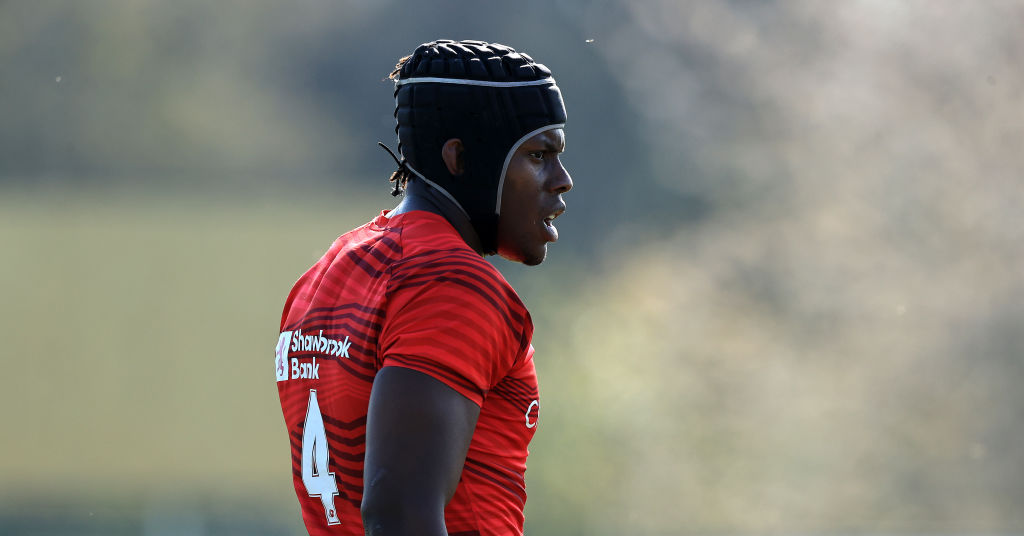The game paying too much for its players

DONCASTER, ENGLAND - APRIL 18: Maro Itoje of Saracens looks on during the Greene King IPA Championship match between Doncaster Knights and Saracens at Castle Park on April 18, 2021 in Doncaster, England. Sporting stadiums around the UK remain under strict restrictions due to the Coronavirus Pandemic as Government social distancing laws prohibit fans inside venues resulting in games being played behind closed doors. (Photo by David Rogers/Getty Images)
After this week’s revelations as to the continual downward spiral of the Premiership clubs with Worcester joining Wasps in the fight to survive, I just can’t help wondering where and how it will end.
What should be a time of expectations after the end of lock down as clubs and fans rejoin the game with anticipation of what the coming season will bring, has been replaced by a sense of foreboding.
At a time when the Premiership had attracted investment from CVC it should have enabled them to invest in the infrastructure of the clubs to increase profitability.
However, it seems some may have used the money to pay off some outstanding debts and/or players’ wages to help improve their current financial position. With a number of club owners reducing their losses by offsetting the CVC money, it is quite possible that some may well choose this time to rethink their commitment and look to reduce their holdings.
This is probably why HMRC issued the winding-up petition against Worcester Warriors just before the start of the new season. HMRC would have looked at the financial implications of the percentage of profits which will go to CVC and made a calculated assessment as to the amount of money the club would expect to make over the next season from previous season’s financial results.
The question would then be whether or not HMRC believes that the club would probably be likely to be able to meet its financial commitments under its current set-up or not and, if not, what was the best outcome.
With 30 per cent of the total Premiership league profit going to CVC who have no further financial commitment to any of the clubs, it is liable to impact on all the clubs as they try to recover from the financial mess created by Covid and lock down. As, on paper, the Premiership is supported by a league structure that runs through the heart of the game from the top of the game to the bottom, the loss of a club or two would make little or no difference to CVC.
If, for instance, Worcester and Wasps were to fail in their attempts to solve their issues and were either forced to close or, like Richmond, Rotherham, Moseley, Rugby and more, suffer relegation to lower leagues, they would be replaced by the likes of Ealing Trailfinders, Cornish Pirates or any of the other clubs in the Championship.
Unfortunately, I believe that the Premiership finds itself in this position as a result of the game paying far too much for its players given the amount of money that is generated at club level, particularly with clubs struggling to get support back to the levels of pre-pandemic times.
Well over half of the total financial turnover of all the Premiership clubs goes on wages with a large percentage of that going on players.
Unfortunately, when the game went professional there was an unrealistic approach taken by RPA and its members which encouraged player strikes to increase player wages at a time when Rugby was desperately trying to come to terms with the virtually overnight move from an amateur game to a professional one.
This was the result of a “Kerry Packer” style attempt to form a professional game by buying international players and setting up a rival international competition. At the time there were a number of players who willingly signed up causing panic at the IRB (now World Rugby).
The original salaries were at a level slightly above the average skilled worker with some players who worked in manual jobs earning more than before but generally lower wages for those in office jobs which created a tension and forced an increase in wages. This was made worse with the introduction of rich owners who thought they could make a financial killing and offered high wages to star players allowing those with the deepest pockets to buy up current internationals.
With the RFU paying the clubs for the release of players, there was an expectation that, as in football, they would only pay a minimal amount to the international players for a match. However, that all changed when the players refused to leave the changing room at a packed Twickenham unless the RFU agreed to raise the match fee which was negotiated by RPA.
Needless to say, that impacted on the club game and saw a dramatic rise in salaries with no matched rise in revenues which has lead to the situation we have now.
A ridiculous system with a wage cap but allows clubs to have marquee players on an unlimited salary not included in that wage cap.
What should be obvious is that the inclusion of marquee players forces clubs to increase the salaries of other star players to a level that cannot be justified when a club’s income is taken into consideration.
For exclusive stories and all the detailed rugby news you need, subscribe to The Rugby Paper website, digital edition, or newspaper from as little as 14p a day.